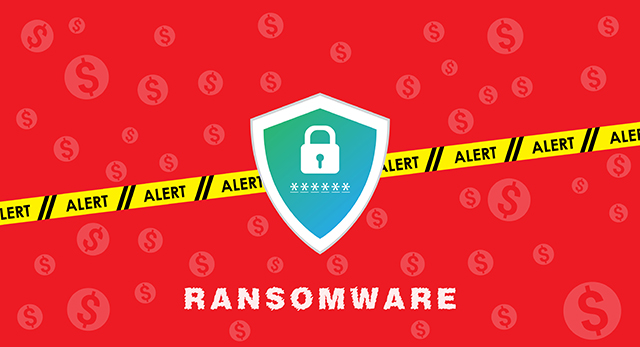
London calling: Hey, US, let's chat about cyber AI, the next WannaCry
In 2017, WannaCry caused significant disruption to the UK public and private sector. The disruption highlighted vulnerabilities within corporate and government systems, most notably within the UK. It impacted hospitals, healthcare facilities and social care, causing operations and admissions to be cancelled, delayed, or postponed.
The attack exposed a lack of robust cyber security measures, failings in basic IT administration and emphasized the importance of investing in strong defenses to safeguard critical public infrastructure. It prompted a renewed focus on cyber security within the UK and initiated efforts to enhance resilience against future cyber threats.

Ransomware and the places that worry about it most
Ransomware is predicted to cost businesses over $265 billion worldwide by 2031 according to Cybersecurity Ventures. New research from Ottowa-based managed services firm Firewall Technical has analyzed search data relating to ransomware attacks and come up with some interesting results.
Wannacry is the most searched for ransomware attack. With 6,830 related searches every month, the ransomware is still causing problems worldwide even though it was released back in 2017.

Five years on from WannaCry -- what have we learned?
Today marks the fifth anniversary of the notorious WannaCry ransomware attack which hit a number of large organizations around the world and was many people's first encounter with ransomware.
Five years on then, what have we learned from the attack and what long-term effect has it had on the industry?

More than half of IT environments still contain WannaCry/NotPetya vulnerabilities
A new report from cloud-native network detection and response company ExtraHop shows that on the fourth anniversary of the WannaCry attack a high percentage of IT environments are still running known vulnerabilities.
It shows the continuing use of ill-advised and insecure protocols, including Server Message Block version one (SMBv1), which was exploited by the WannaCry ransomware variant to encrypt nearly a quarter of a million machines worldwide, and is still found in 67 percent of environments.

Microsoft issues new patch for Windows XP to fight a dangerous 'wormable' vulnerability
Microsoft stopped supporting Windows XP back into 2014, but took the 'highly unusual' step of releasing a patch for the ancient OS two years ago in a bid to fightback against the WannaCry ransomware, and then included XP in that June’s Patch Tuesday updates.
You’d be forgiven for thinking that that would be the very last time Microsoft patched XP, but no. The software giant has included Windows XP and Windows Server 2003 (also no longer supported) in today’s Patch Tuesday fixes.

Number of data breaches falls but 2018 is still set to be the second worst year on record
In the final quarter of 2018, the number of reported breaches is down by eight percent and the number of exposed records is down around 49 percent, from seven billion in 2017.
The latest Data Breach QuickView report from Risk Based Security shows that seven breaches exposed 100 million or more records with the 10 largest breaches accounting for 84.5 percent of the records exposed this year to date.

Boards focus on security awareness post WannaCry
Awareness of cybersecurity at board level is growing as last year's WannaCry attack has highlighted the need to guard against attacks.
The research, conducted by Vanson Bourne, as part of an international survey of 500 businesses in the UK, France, Germany and the USA, was commissioned by endpoint protection specialist SentinelOne.

Ransomware attacks up 400 percent in 2017 mainly due to WannaCry
Ransomware attacks grew by 400 percent last year, largely down to the success of the WannaCry attack. It’s perhaps not surprising that other variants slowed down, but this signals a shift in the way ransomware is being used.
A new report from F-Secure shows WannaCry accounted for nine out of every 10 ransomware detection reports by the end of the year.

Just one percent of NHS trusts have migrated to Windows 10
Last year, the UK’s National Health Service was hit hard by the WannaCry/WannaCrypt ransomware attack that went on to infect computers around the world. The attack was so bad that Microsoft took the unprecedented step of patching Windows XP to try and stem the spread of the problem.
While it first believed that NHS computers running XP were the source of the issue, it turned out to be Windows 7 systems that were mostly to blame. PCs running Windows 10 were immune from the attack. You would have thought, having been through such a terrible experience, that the NHS would have taken steps to prevent it happening again, but it seems not.

Bad Rabbit ransomware spreads across Eastern Europe with echoes of WannaCry and Petya
A new strain of ransomware -- dubbed Bad Rabbit -- has struck in Russia, Ukraine and other parts of Eastern Europe. It is thought to be a variation on Petya due to a number of similarities, and it is wreaking havoc with media outlets and transport systems, including an airport in Ukraine, and the underground in Kiev.
Like many other forms of malware, Bad Rabbit was initially spread through a fake Flash installer, but it was then able to spread via networks to hit a larger number of machines. The spread of the ransomware is further facilitated by using the open source Mimikatz for extracting credentials, and DiskCryptor for encrypting data.

UK officials believe North Korea is behind WannaCry ransomware
Nearly a month after it struck devices around the globe, new information has emerged surrounding the major WannaCry ransomware attack.
The BBC says British officials from the National Cyber Security Center (NCSC) are now claiming infamous North Korean cyber-criminal group Lazarus was behind the attack.

Microsoft is killing off SMBv1 in Windows 10 to thwart the likes of WannaCry
From the fall, Microsoft is disabling SMBv1 in Windows 10. With the release of Windows 10 Fall Creators Update (or Redstone 3 if you prefer), the protocol that was exploited by the WannaCry ransomware will be no more.
The file sharing protocol was developed by Microsoft over two decades ago, and the company recognizes that the time has come for it to be retired. Internal builds of Windows 10 being tested by Microsoft already have SMBv1 disabled, and similar builds will make their way to Windows Insiders and the wider public in due course.

Malicious antivirus apps prey on ransomware fears
Recent weeks have seen a rise in fake WannaCry protectors on mobile app stores, even though this particular infection doesn't target mobile devices.
But using the fear of high profile infections to get users to download potentially unwanted programs or malware is nothing new according to threat management company RiskIQ. Using its mobile database, hundreds of examples of apps that claim to help defend mobile phones were found, instead, to be preying on unsuspecting users by pushing adware, trojans, and other malware.

Microsoft: 'No known ransomware works against Windows 10 S'
When WannaCry was running rampant on older versions of Windows -- Windows 7 being the most at risk -- Windows 10 was unaffected. According to Microsoft, "no Windows 10 customers were known to be compromised by the recent WannaCry (WannaCrypt) global cyberattack."
That’s great news for anyone running the latest version of the OS, and the software giant says it is working to ensure Windows 10 remains safe from other future attacks. However, if you want to guarantee your safety from ransomware, then Microsoft points out there’s an even more secure option to consider -- Windows 10 S.

Outdated operating systems triple the risk of a data breach
The recent WannaCry attack has highlighted the dangers of running out of date and un-patched systems.
New research by security ratings company BitSight has released a new report showing that organizations with more than 50 percent of their computers running outdated versions of an operating system are more than three times as likely to experience a breach. In addition those with more than 50 percent of their computers not running the latest version of an internet browser are more than twice as likely to experience a publicly disclosed breach.
